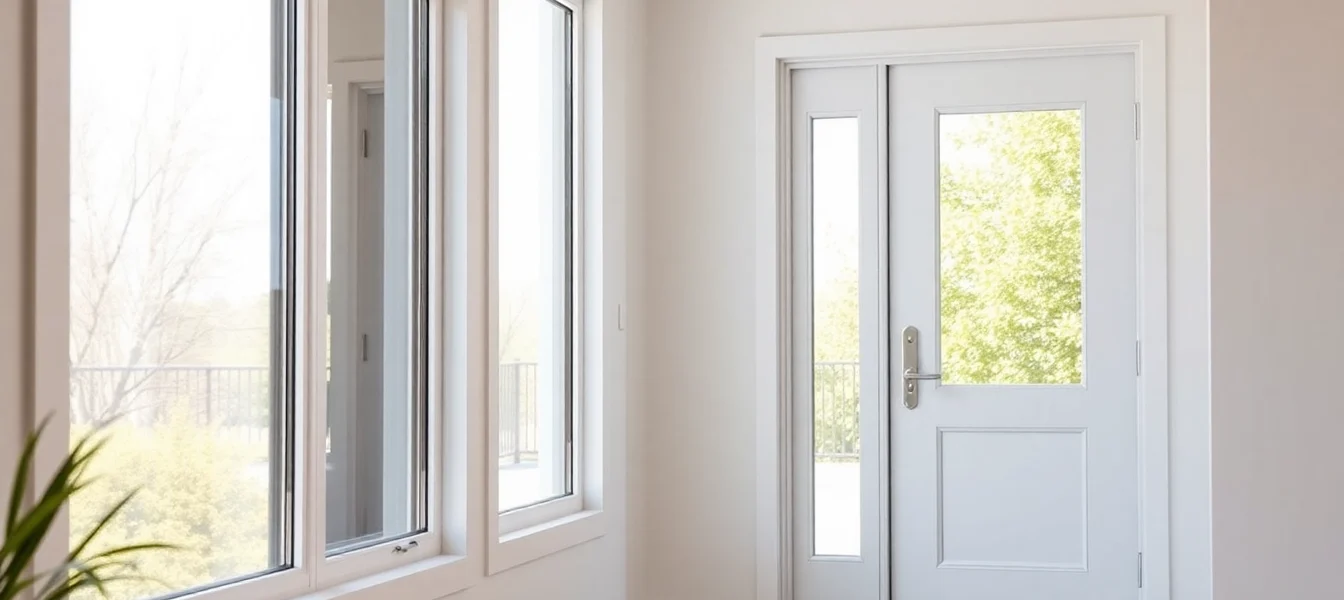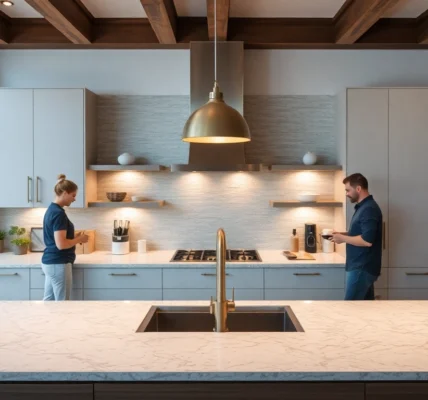Window and Door Replacement: A Practical Guide to Comfort, Efficiency, and Home Value
Replacing windows and doors is a strategic upgrade that affects comfort, energy use, security, and curb appeal. A thoughtfully chosen replacement can reduce drafts, improve indoor climate, and elevate home value—often with a manageable payback over time. This article guides homeowners through practical steps, from planning to installation, drawing on industry best practices and real-world scenarios.
As you begin the planning process, consider how window and door replacement can impact daily life: superior seals for winter warmth, sound resistance for busy streets, and better performance during seasonal storms. For a structured, ROI-focused approach, explore resources on window and door replacement and apply the same discipline to your project.
Understanding Window and Door Replacement: Why It Matters
Benefits of window and door replacement for comfort, security, and value
Comfort starts with tight seals and stable climates. Modern frames and glazing reduce drafts, stabilize interior temperatures, and minimize cold spots near windows and doors. Security benefits come from robust locking systems, reinforced glass options, and well-sealed frames that deter break-ins. In terms of value, upgrades often refresh curb appeal, improve first impressions, and can contribute to higher resale value, particularly when paired with energy-efficient performance.
Practical tips: prioritize units with updated gaskets, multi-point locking, and durable hardware. Consider glazing that balances daylight with glare control, so rooms stay bright without overheating. A cohesive look across doors and windows also strengthens architectural harmony, which buyers notice instantly.
Key indicators that replacement is needed
- Persistent drafts or chilly rooms despite weatherstripping.
- Condensation buildup between panes, or fogging that signals failed seals.
- Difficulty opening, closing, or locking—often a sign of warped frames or deteriorated hardware.
- Rot, peeling paint, warping, or water intrusion around sills and casings.
Energy and condensation impacts of replacement decisions
Energy performance hinges on U-factor, SHGC, and air leakage. Replacing single-pane or inefficient units with double- or triple-pane, Low-E coatings, and gas-filled gaps can dramatically cut heating and cooling loads. In humid climates, improved humidity control and better window sealing reduce condensation on interior surfaces, protecting finishes and indoor air quality. When evaluating options, look for NFRC ratings and ask about gas fills, UV protection, and glare reduction capabilities.
Planning Your Window and Door Replacement Project
Assessing goals: performance, aesthetics, and budget
Begin with a three-part framework: performance (air leakage, U-factor, solar gain), aesthetics (style, color, grille patterns), and budget (material costs, installation, warranties). Rank features by importance to your climate and lifestyle—e.g., harsh winters demand tighter seals, while exposure-heavy facades benefit from UV-resistant coatings and durable finishes.
Choosing between retrofit vs full-frame window and door replacement
Retrofit (insert) replacements conserve interior trim and are ideal when the existing openings are sound and the sills are solid. Full-frame replacements remove the entire unit, including the sash and frame, allowing you to correct rot, adjust dimensions, or upgrade to a different operating style. If there is water damage, persistent leaks, or structural concerns, full-frame is typically the prudent path.
Timeline, permits, and contractor selection
Typical projects span a few days to a couple of weeks, depending on home size and the number of openings. Check local code requirements on permits and inspections, and obtain written quotes that specify product lines, installation methods, and warranty terms. When choosing a contractor, verify licenses, request past project references, and confirm your expectations for cleanup, debris removal, and post-installation support.
Choosing Materials and Styles for Window and Door Replacement
Material options: vinyl, wood, fiberglass, aluminum
Vinyl tends to offer excellent value, low maintenance, and good insulation. Wood provides classic aesthetics and superior strength but requires regular finish maintenance. Fiberglass balances durability with energy efficiency and can mimic wood patterns. Aluminum frames are slim, strong, and good for large installations but may conduct heat, so pairing with thermal breaks is important. Your climate, maintenance tolerance, and desired look will guide the material choice.
Design harmonization with architecture and color schemes
Architectural coherence matters. Choose window profiles that complement the home’s era and style—clean, square lines for modern homes; divided lite patterns for traditional façades. Coordinate grille layouts, trim depth, and exterior colors with siding, roofing, and front door finishes to create a unified appearance that enhances curb appeal and resale value.
Energy efficiency ratings and glass technologies
Beyond frame materials, glazing options drive performance. Look for double- or triple-pane configurations with Low-E coatings, argon or krypton gas fills, and laminated safety glass for impact resistance. Low solar heat gain coatings help control summer heat, while tinted or reflective glass can balance daylight with comfort. All choices should align with your climate and comfort priorities, using certified NFRC ratings for apples-to-apples comparisons.
Installation Best Practices and Timing
Preparing for installation day: measurements and approvals
Accurate measurements are critical. Recheck rough openings for square, level, and plumb conditions. Remove obstruction around openings and ensure access for installers. Confirm any required permits are in place and that required approvals are documented to avoid delays during installation.
Installation steps and quality checks for window and door replacement
Professional installation typically follows a sequence: remove existing units, inspect surrounding framing for damage, install flashing and weather barriers, secure the new units with proper shims, seal joints, and perform a functional test. A quality check should include operation tests (open/close, lock), water testing for leaks, and a visual inspection of finishes and caulking. Ensure debris is cleaned and that trim returns are properly sealed to prevent water intrusion.
Warranty, maintenance, and post-installation care
Ask about separate warranties for product, installation, and glass. Maintain units with recommended cleaning practices and periodic inspections of seals, hardware, and caulking. Address minor issues promptly to prevent bigger problems, such as water damage or draft paths, and schedule annual inspections if your climate requires seasonal adjustments.
Measuring Success: Cost, Energy Savings, and ROI
Cost breakdown and financing options for window and door replacement
Project cost typically comprises product price, labor, and any site preparation or permits. Consider financing options such as contractor-backed plans, home improvement loans, or manufacturer promotions. A transparent quote that itemizes each opening helps you compare choices and plan for any contingencies.
Quantifying energy savings and comfort improvements
Energy savings depend on climate, current performance, and the window/door package chosen. Replacing inefficient units with modern, well-sealed options can reduce heating and cooling loads, resulting in noticeable comfort gains, fewer drafts, and improved humidity control. Track utility bills before and after installation for a practical measure of impact.
Case studies and metrics that demonstrate ROI
In many homes, ROI comes from a combination of reduced energy bills and increased resale value driven by improved aesthetics and reliability. While outcomes vary, well-executed replacements that align with home style and climate can deliver a compelling mix of comfort, protection from the elements, and market appeal, especially when paired with consistent maintenance and a solid warranty.

